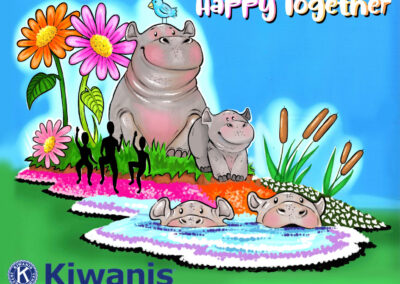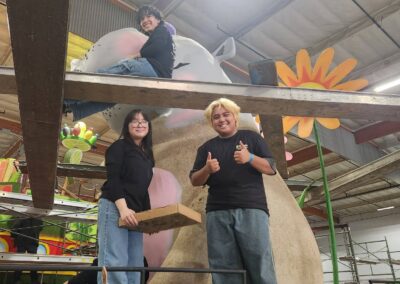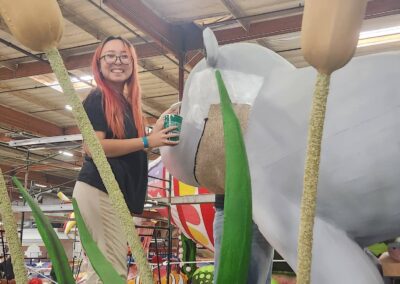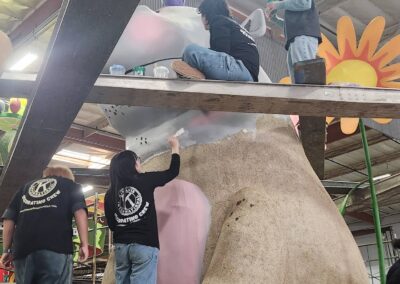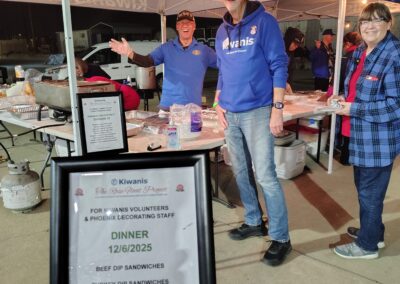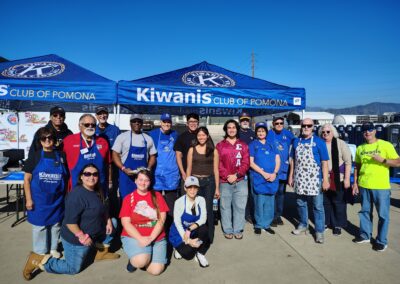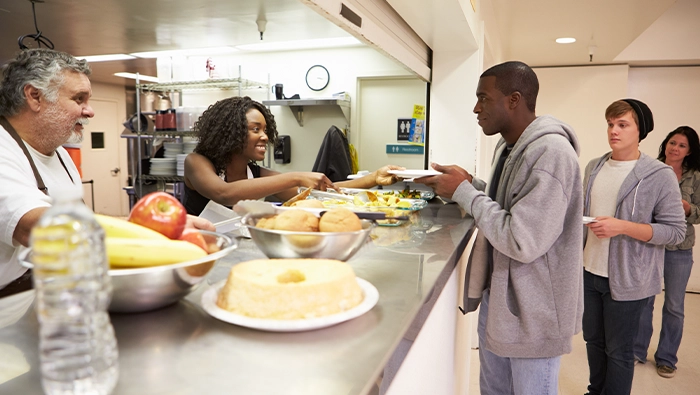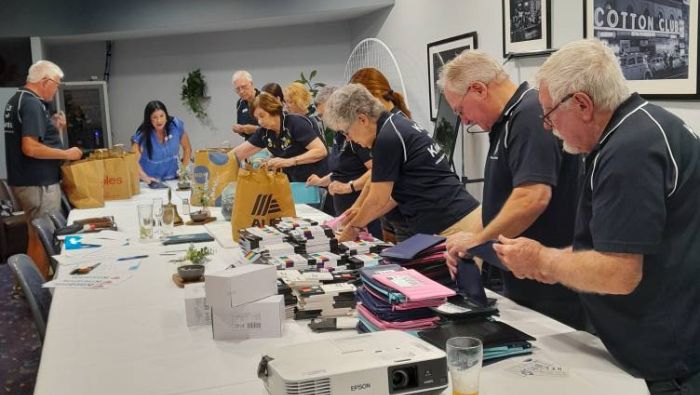
Fun facts about our Rose Parade float
Find out what it takes to get ready for the big event.
By Tony Knoderer
During the annual Tournament of Roses Parade (aka “The Rose Parade”) in Pasadena, California, U.S., Kiwanis International’s float is always one of the most fun to see. But it takes a lot of work to be that creative!
Our 2026 float is a hippo-themed design called “Happy Together.” (The theme of the Rose Parade itself is “The Magic of Teamwork.”) Built by the Phoenix Decorating Company, the float is being decorated by hundreds of volunteers — including many from throughout the Kiwanis family — to get it ready for the January 1 event.
Volunteers aren’t assigned to just one parade float, however. This year, each volunteer helped decorate eight floats altogether.
Facts and figures
So, how much work goes into decorating the Kiwanis International float — and others? Kiwanians Patricia Larrigan and Caesar Milch, cochairs of the District Rose Float Project, were kind enough to provide some facts:
- There are 113 decorating hours scheduled throughout December.
- Each shift normally includes 300 volunteers — in roles ranging from onsite decorators to feeding teams, registration check-in and more.
- An estimated 40,000 volunteer hours will be completed by the end of the month.
- About half of the volunteers are Key Club members. Members of Circle K International and Aktion Club also help.
- Volunteers serve an average of eight hours. Some occasionally serve as many as 12 hours. In years past, some people have worked for 15 hours to help complete floats in the final days before the parade.
- A couple of members from the Kiwanis Rose Float Club of Pasadena have volunteered to work on the float for 25 consecutive years. Another current volunteer started 36 years ago.
- Kiwanis members have gone to Pasadena from as far as Denver, Colorado, U.S., to help decorate.
In addition to the hours required, here are some details about the Kiwanis float itself:
- The two front hippos have been named Harriett and Henrietta — with eyelashes and bows added by volunteers. Their big brother hippo is Henry.
- The large “mama hippo” has been named Hildie, and the blue bird on top of her is Sweet Tweets, as named by Eileen Geraci, first lady of the California-Nevada-Hawaii District.
- The float is being decorated with strawflower in various shades of pink, along with a large amount of sod with accents to make the ground appear like a marsh. Cochairs Larrigan and Milch also report “a crazy amount of lettuce seed this year — easily a 5- to 10-gallon bucket.”
Past and present
Volunteers’ work on Kiwanis International’s Rose Parade floats has a history of being honored. In both 2023 and 2024, Kiwanis received the Tournament Volunteer Award for outstanding floral presentation of the parade’s theme among floats 35 feet or fewer in length. And in 2010, Isabella Coleman was honored for the most outstanding presentation of color and color harmony through floral design.
We thank this year’s volunteers for keeping up a great tradition of volunteer spirit and creativity. And we encourage everyone to see their work — the float will be 77th in the parade lineup.
The big event will be televised worldwide on multiple networks and streaming services beginning at 11 a.m. ET/8 a.m. PT on January 1.

